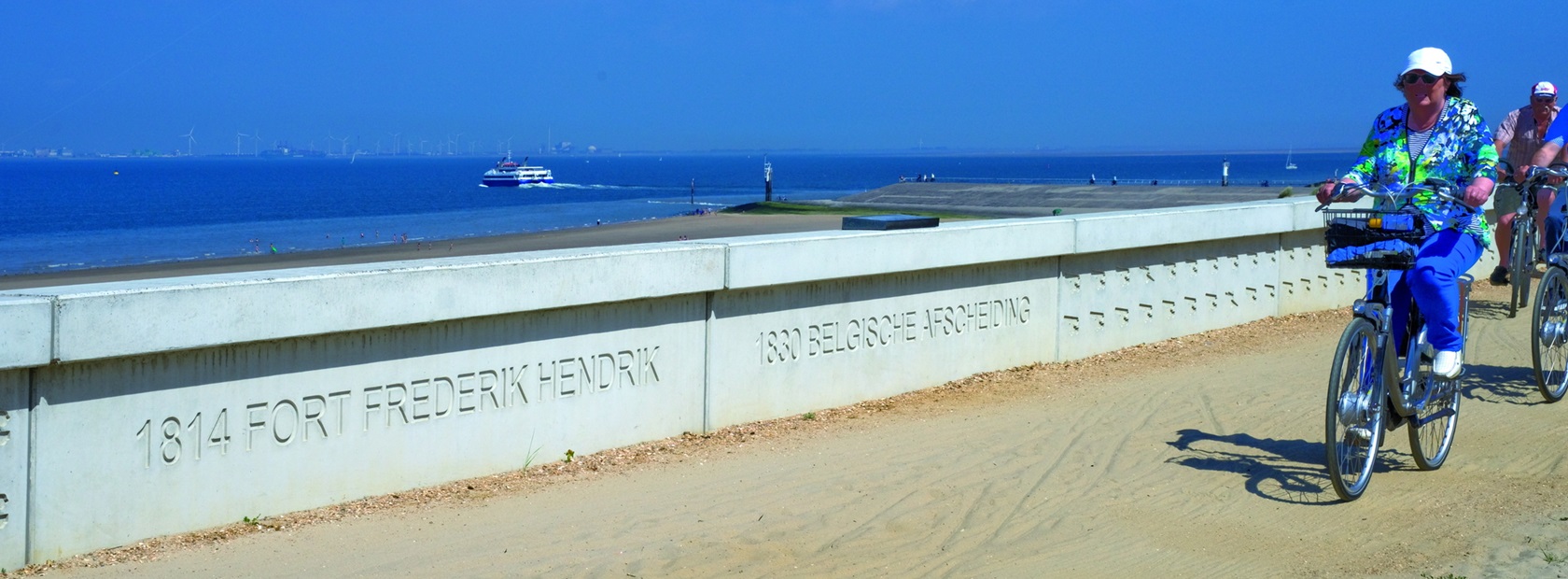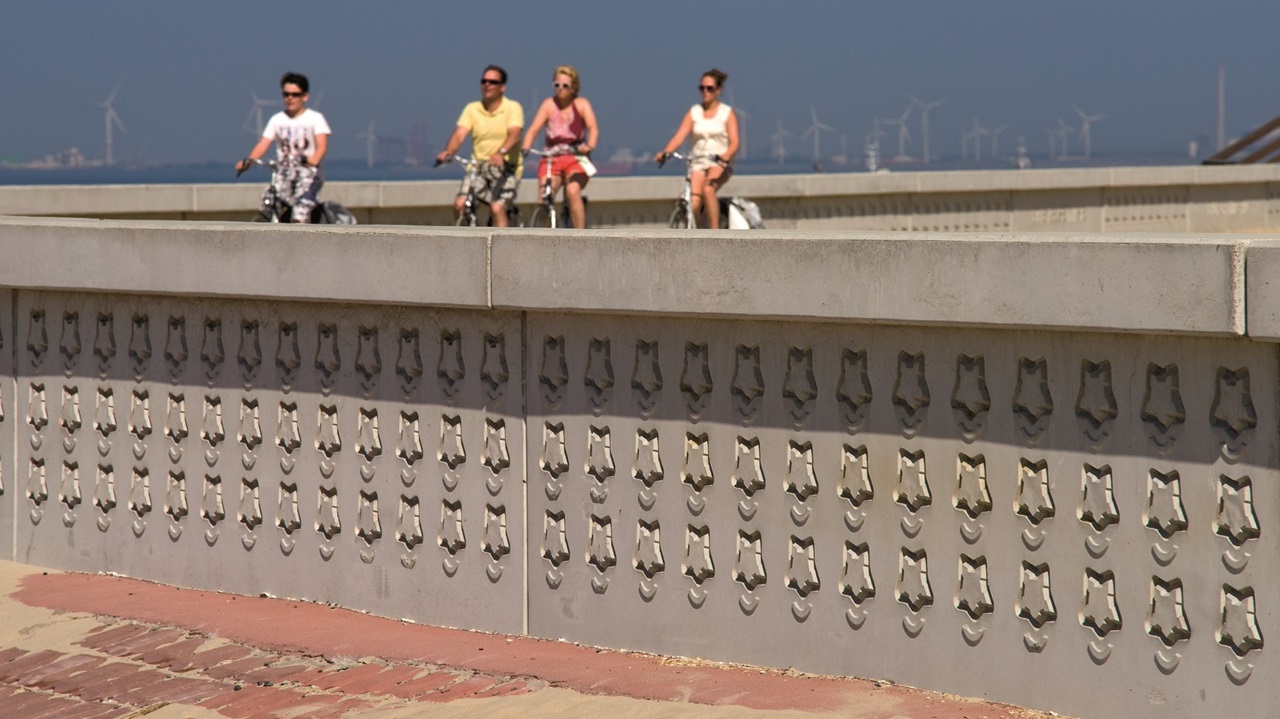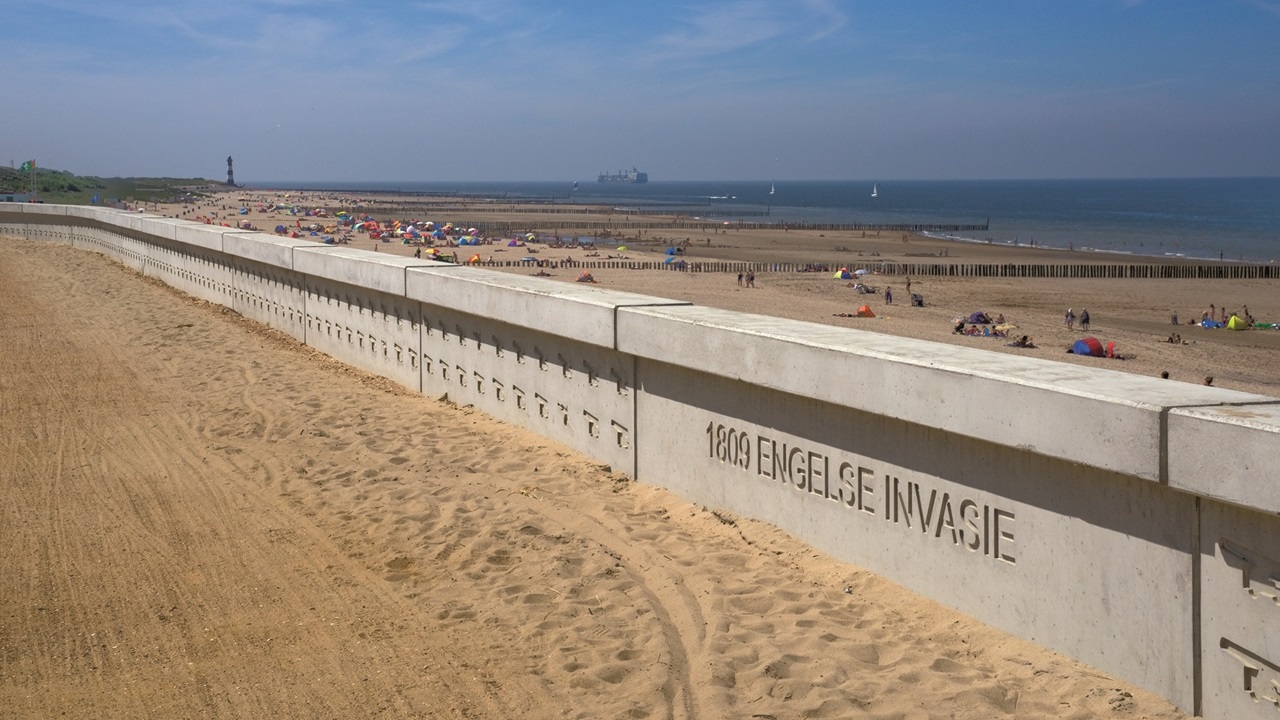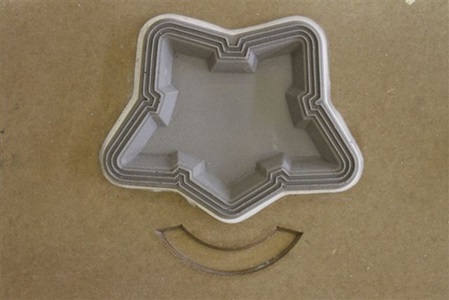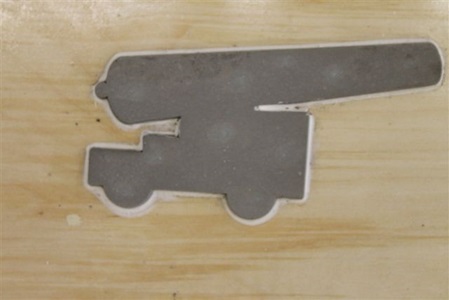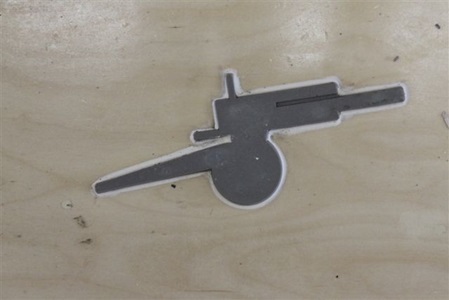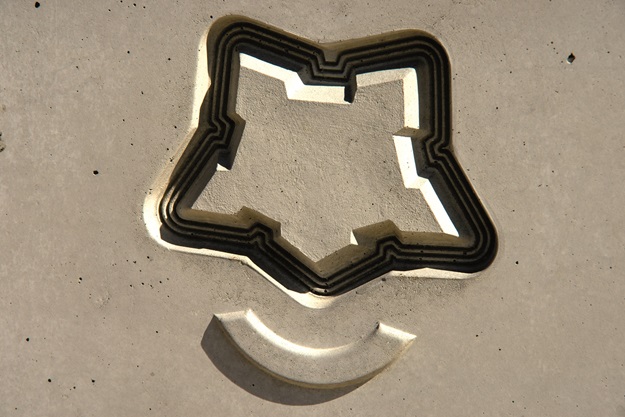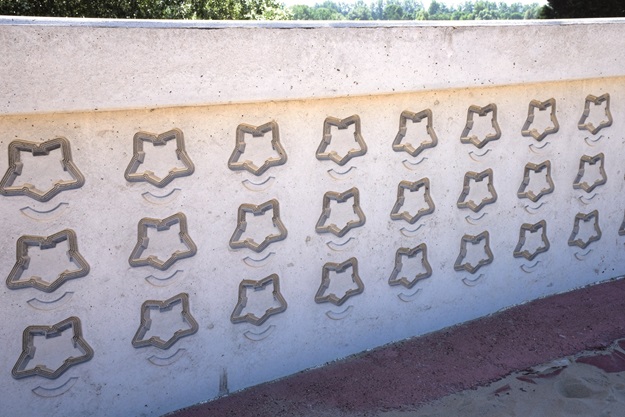A wall drenched in history
Today, Breskens is a small, tranquil harbour town attracting large numbers of tourists to its wonderful sandy beach. But it has not always been so peaceful. Because of its proximity to Britain and its strategic location at the mouth of the River Schelde, Breskens has witnessed repeated military action. For example, a British invasion began here during the Napoleonic Wars. Since then, many fortifications have been built along the coast, of which Fort Frederik Hendrik was the most important. During the Second World War as well, Breskens provided the stage for military exchanges.
Coastal defences
Until now visitors to the tourist town saw very few signs of its eventful history. This has changed, however, since the recent improvements to the flood defences. As part of these works, the authorities have built a 486 m long flood retention wall. The wall is constructed of precast concrete units that project about a metre out of the sand and extend to the same depth below. The surfaces of the units are decorated with a relief of symbols and lettering that make reference to the history of the place. The flood prevention measures were designed by Dutch landscape architects Planklaan, Den Bosch.
History in symbols
The architects at Planklaan thought carefully about the aspect of historical reconstruction. They paid special attention to Fort Frederik Hendrik. Built by Napoleon in 1814, it had to surrender in later years to a holiday and beach park. Because the fort had a pentagonal layout in plan, the architects opted for a star-shaped symbol. It can be seen on most of the concrete wall surfaces. Another relief shows cannons from earlier and later times. Different historical events in the area are recalled in variously sized lettering along with their dates. Two examples are the British invasion and the 1830 Belgian revolution.
Efficient support
The designers of the flood prevention walls at Breskens placed their trust in the know-how and abilities of NOE´s Dutch subsidiary. For the flood prevention wall at Breskens, they suggested something different to the usual solution of large sheets of formliner several centimetres thick: manufacturing the selected formliner out of NOEplast but with motifs no bigger than the palm of your hand in some places. These were then glued to a supporting board that was in turn fixed onto the formwork. This had the advantage of using considerably less material and reducing costs. The same process was used for the symbols and lettering on the walls.
Advice right down to the detail
Taking the symbol for Fort Frederik Hendrik as an example, the designers first proposed a motif composed of a five-pointed star chamfered at its edges, a deep groove and a raised arc. The five-pointed star represented the fort, the groove the moat around it and the arc a battery of cannons that once stood in front of the fort and pointed out to sea. In designing the NOEplast elements, it soon became clear to NOE that the groove created with the formliner would be too deep and narrow for the formwork to strip well from the concrete. To the architects, on the other hand, this geometry was important because they feared the desired shadow effect would otherwise not be visible. With this aim in mind, NOE suggested a very minor modification to the motif. This was to the benefit the design's aesthetics and its technical implementation. NOE advised the architects to make the groove slightly wider and shallower. A further suggestion was to integrate three smaller grooves in the main groove. In addition to symbolising the water in the moat, they would also create the architects' desired shadow effect. The architects liked this suggestion so much that they adopted it. This example shows how an attractive result was achieved through careful design and a good cooperative relationship between the architects and NOE's engineers. Today, the flood prevention wall not only keeps the town of Breskens safe, but also brings the history of the place to the attention of the visitor in an attractive and interesting way.

